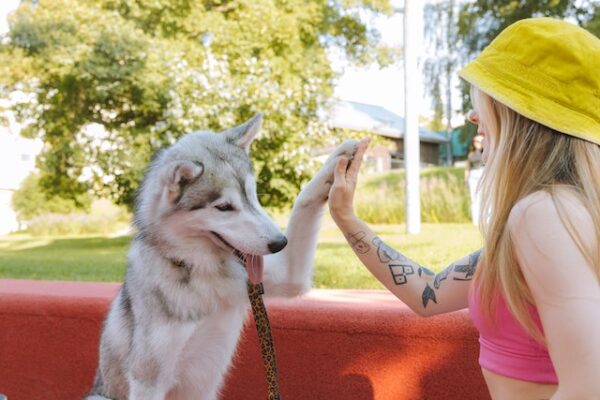
Obedience Training for Novice Dog Owners
Obedience training is an essential aspect of dog ownership, especially for novice owners. It helps establish a strong bond between you and your furry companion, promotes good behaviour, and ensures your dog’s safety. This article aims to provide detailed guidance on starting obedience training for your dog, keeping you motivated and engaged throughout the process. So if you’re starting to look for a dog, read on to learn more about obedience training.
Obedience Training for Novice Dog Owners
The Importance of Obedience Training
Obedience training teaches your dog basic commands such as sit, stay, come, and heel. It establishes a clear communication channel between you and your dog, fosters mutual respect, and ensures the dog’s safety in various situations. Well-trained dogs are less likely to exhibit destructive behaviours or cause harm to themselves or others.
Choosing the Right Training Method
There are several methods to train a dog, including positive reinforcement, clicker training, and the use of training collars. As a novice dog owner, it’s crucial to select a method that aligns with your training goals and your dog’s personality. Positive reinforcement and clicker training are highly recommended as they encourage desired behaviours without causing fear or stress.
Laying the Groundwork for Successful Training
Creating a Consistent Training Environment
Consistency is key when training a dog. Establish a routine and designated training area free from distractions. Training sessions should occur at the same time each day and last between 5 to 15 minutes, depending on your dog’s attention span. Some dogs will be more inclined to pay attention for long periods, while others may be more easily distracted.
Establishing Yourself as the Leader
Dogs respond best to confident, assertive leaders. Stand tall, use a firm yet calm voice, and avoid harsh punishment or yelling. Praise your dog with positive reinforcement (treats, toys or affection) when they follow your commands.
Understanding Your Dog’s Learning Pace
Every dog is different and will learn at their own pace. Be patient, stay committed to the training process, and celebrate your dog’s progress. Adjust your expectations and training techniques based on your dog’s temperament and breed.
Teaching Basic Obedience Commands
1. The Sit Command
- Hold a treat near your dog’s nose.
- Move your hand upward, allowing their head to follow the treat.
- As their bottom lowers to the ground, say “sit.”
- Reward your dog with the treat and verbal praise.
2. The Stay Command
- Ask your dog to sit.
- Open your palm and say “stay.”
- Take a few steps back, maintaining eye contact.
- If your dog remains seated, reward them with a treat and praise.
3. The Come Command
- Attach a long leash to your dog’s collar.
- Kneel down to your dog’s level and say “come” while gently pulling on the leash.
- When your dog comes to you, reward them with a treat and praise.
- Gradually increase the distance and practise off-leash as your dog becomes more reliable.
4. The Heel Command
- Begin with your dog on your left side.
- Hold a treat in your left hand and say “heel.”
- Start walking forward, using the treat to guide your dog.
- Reward your dog when they walk by your side without pulling.
Staying Motivated and Engaged
Understand that training takes time and effort. Set achievable goals and celebrate each milestone. Remember that setbacks are normal, and progress may not always be linear.
Incorporate play and interaction into training sessions to keep both you and your dog engaged. Vary the training exercises, and incorporate new challenges to prevent boredom and maintain your dog’s interest.
Keep a journal or log of your dog’s progress to stay motivated and identify areas for improvement. Regularly assess your dog’s performance and adjust your training methods accordingly.
Participating in group training sessions or classes provides a supportive environment, access to professional trainers, and opportunities for socialisation with other dogs. These classes can boost your motivation, improve your training skills, and offer new perspectives on dog training techniques.
Rewarding Yourself
Training a dog can be challenging, but it’s essential to recognize your hard work and progress. Celebrate your achievements, and don’t forget to reward yourself for your dedication and commitment to your dog’s training journey. This also goes for any other members of the household who participate in training alongside you.
Conclusion
Obedience training is an invaluable investment in your dog’s well-being and your relationship with them. As a novice dog owner, it’s crucial to understand the fundamentals of training, establish a consistent routine, and teach basic commands. Stay motivated and engaged by setting realistic expectations, keeping sessions fun, tracking progress, and seeking support from training classes or groups. With patience, persistence, and a positive attitude, you’ll soon have a well-trained and happy canine companion.



